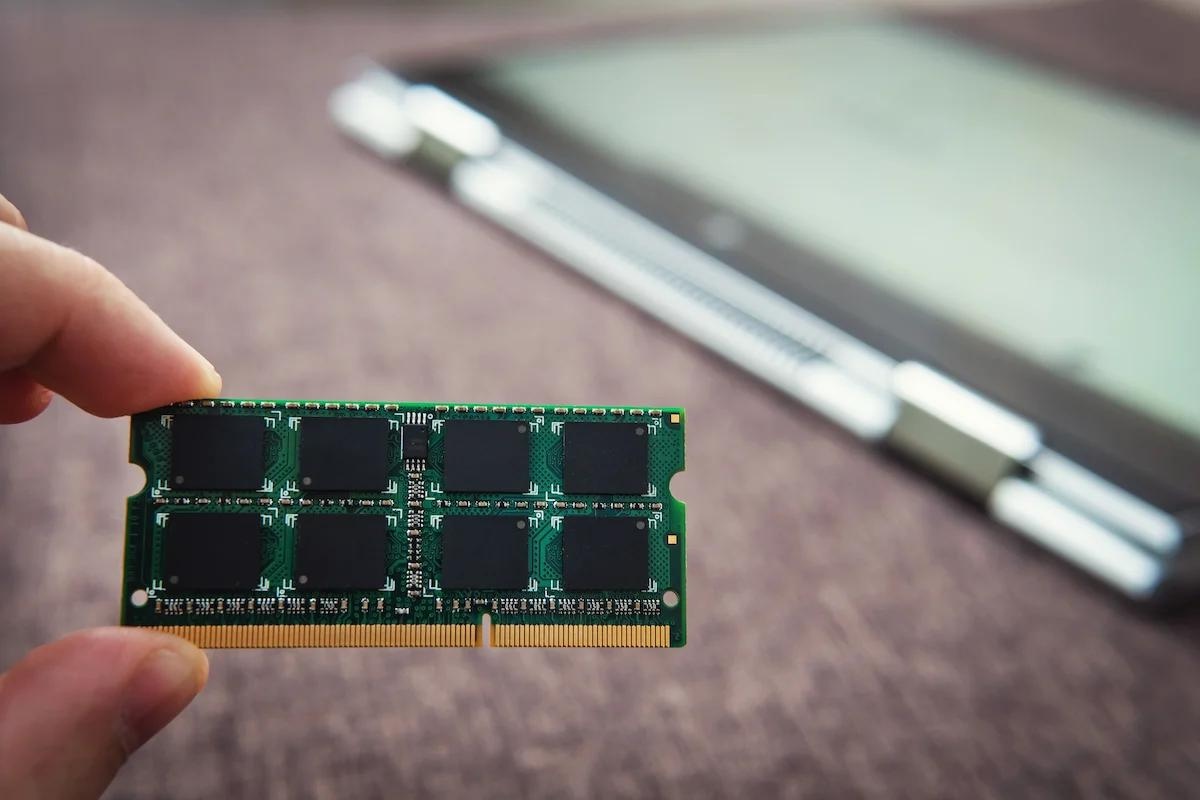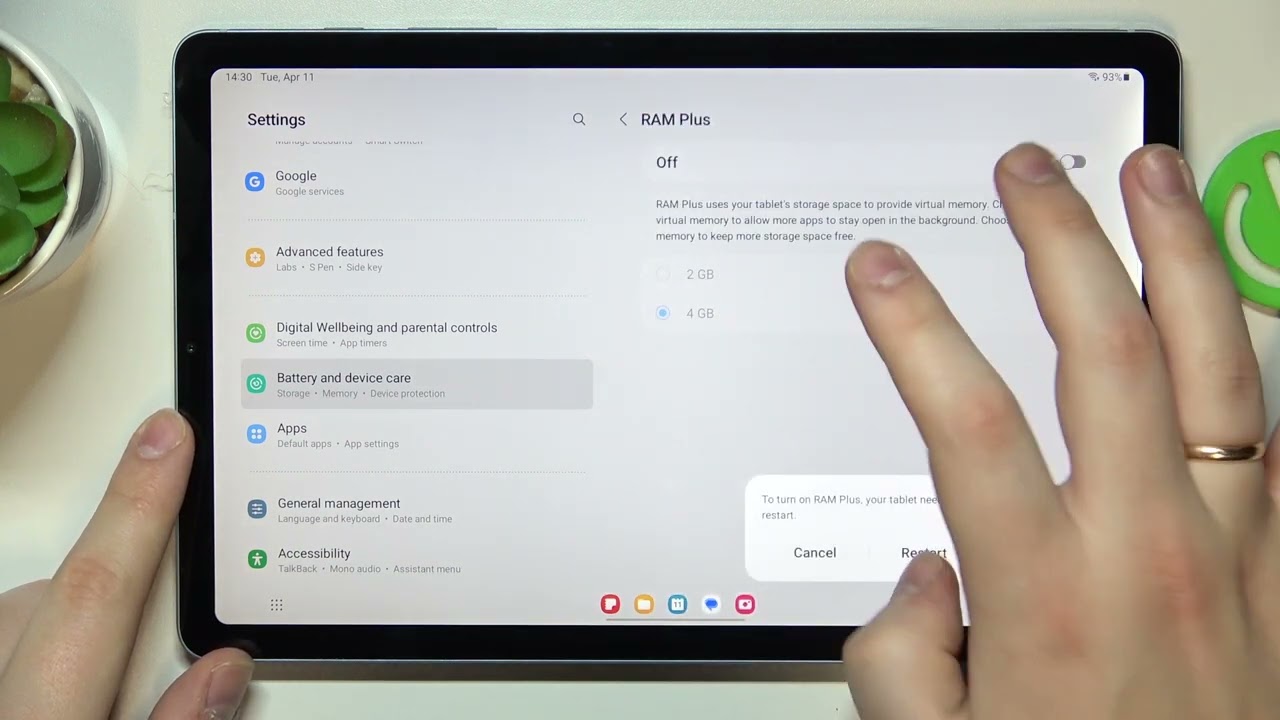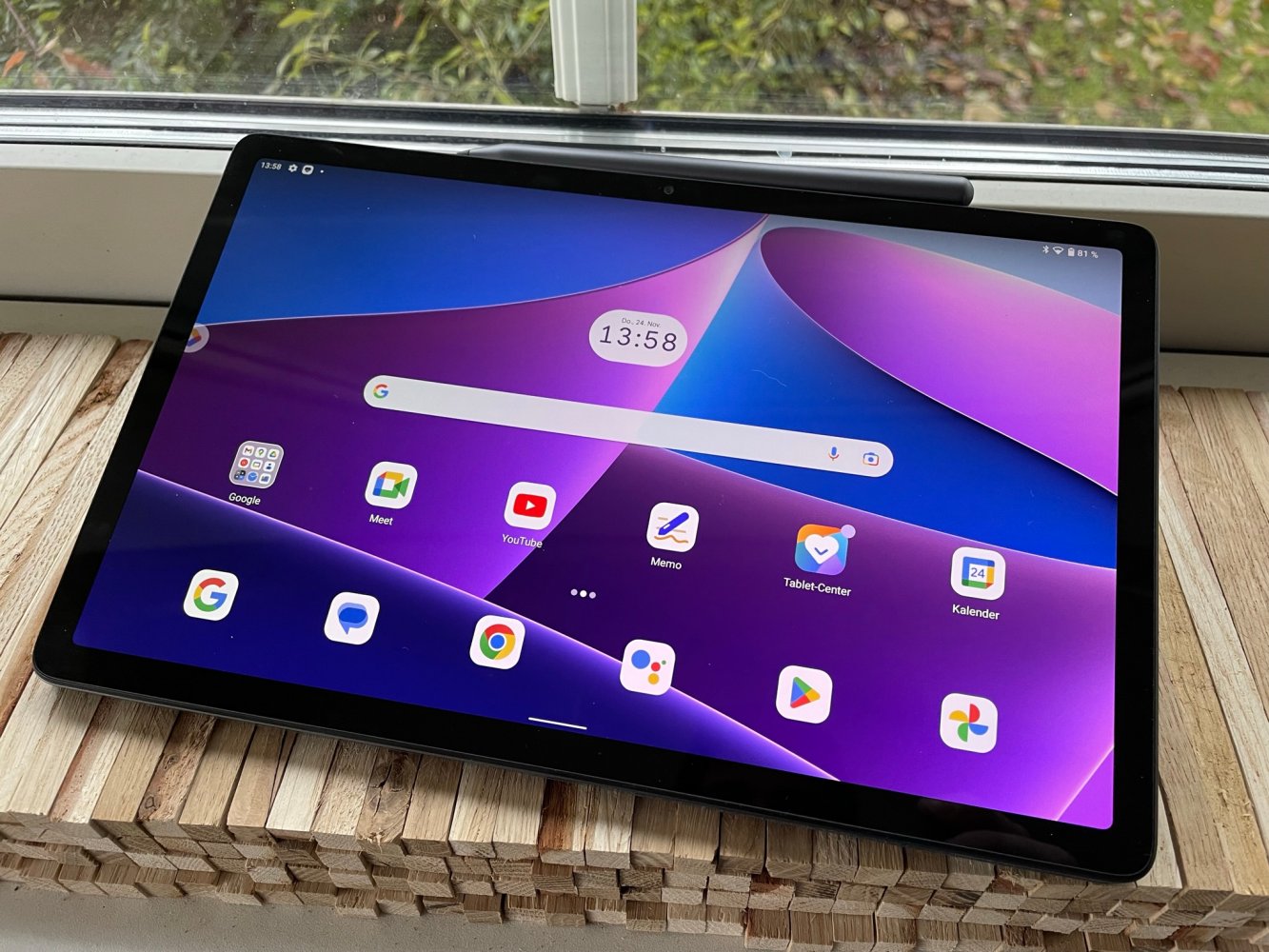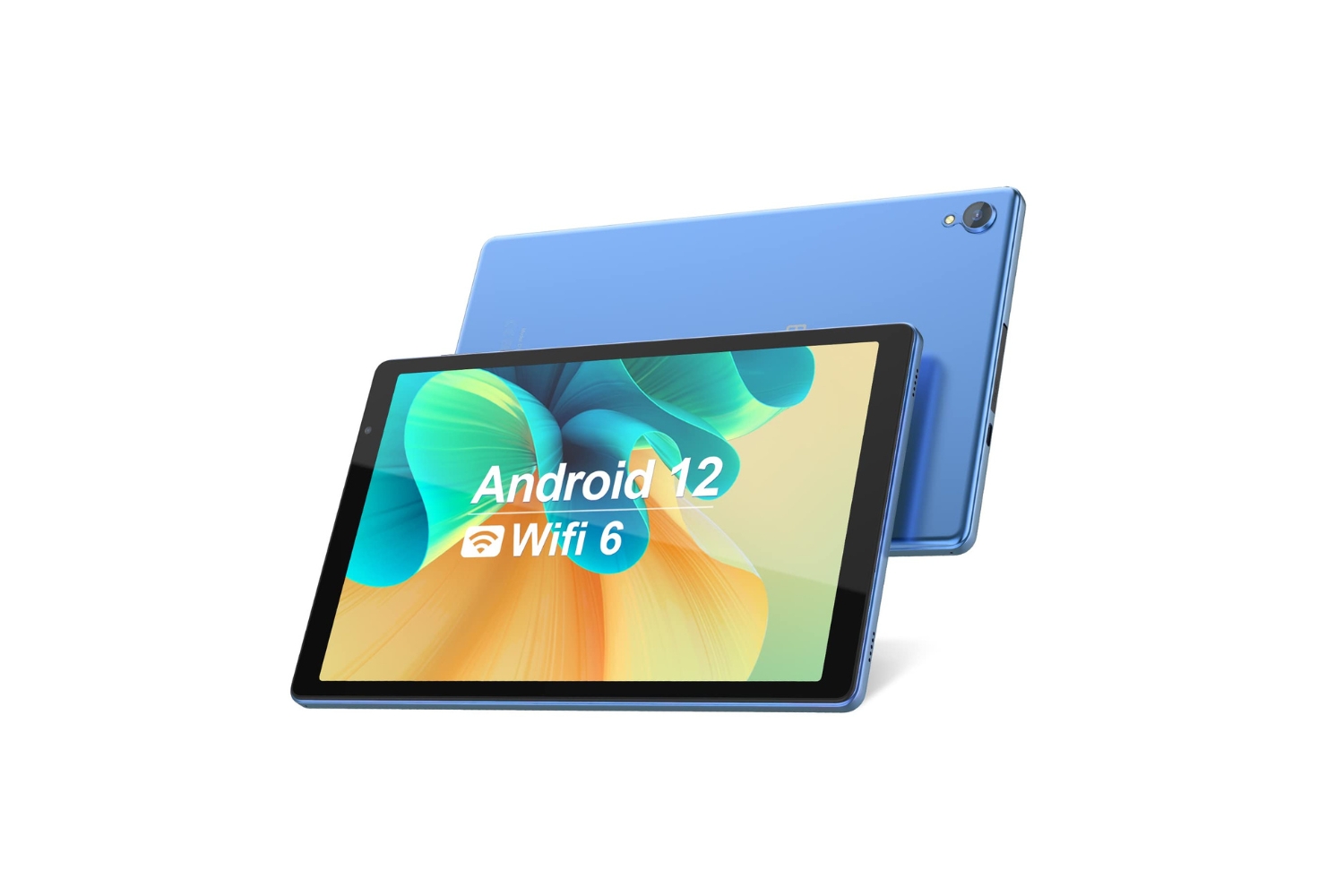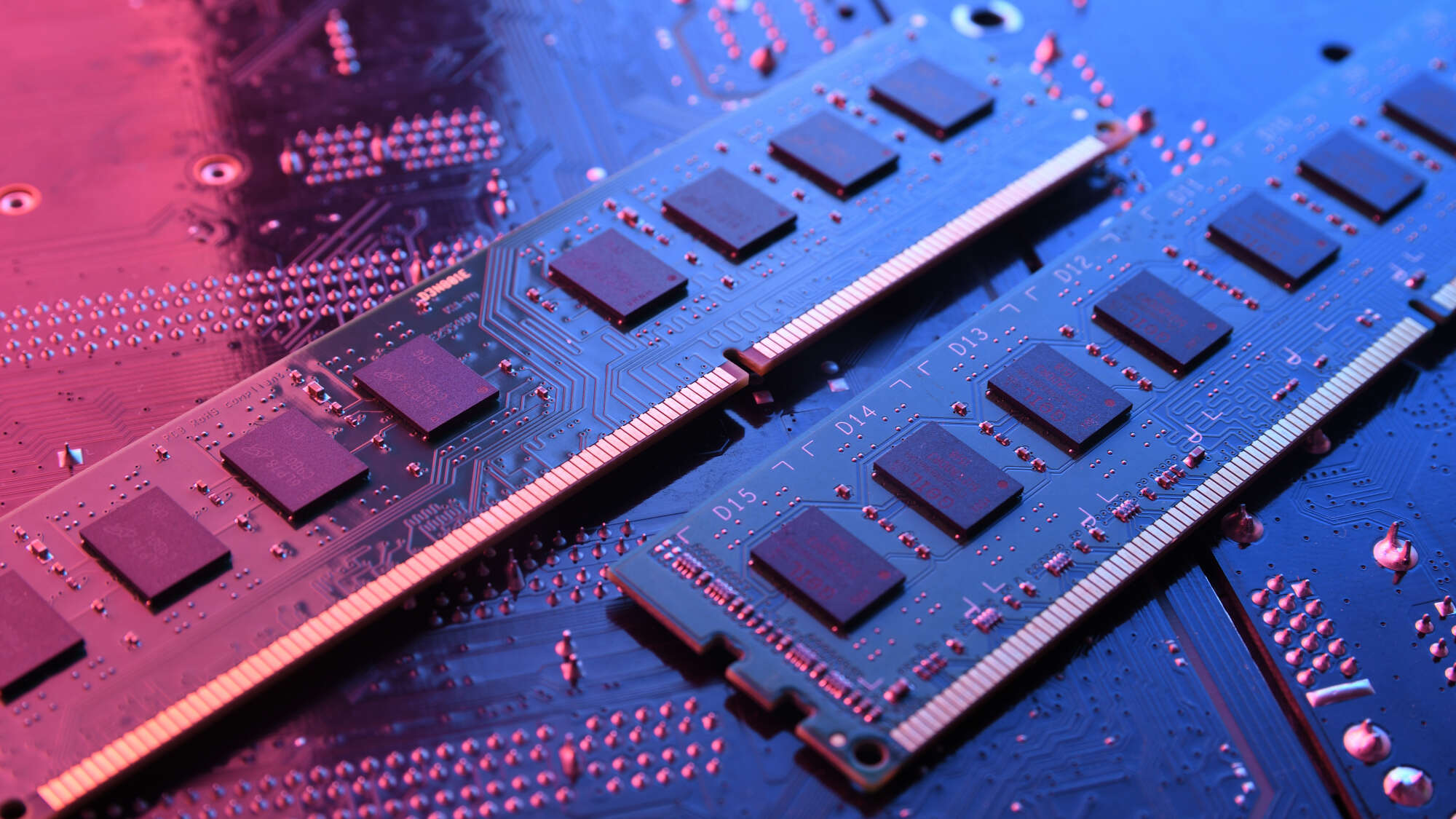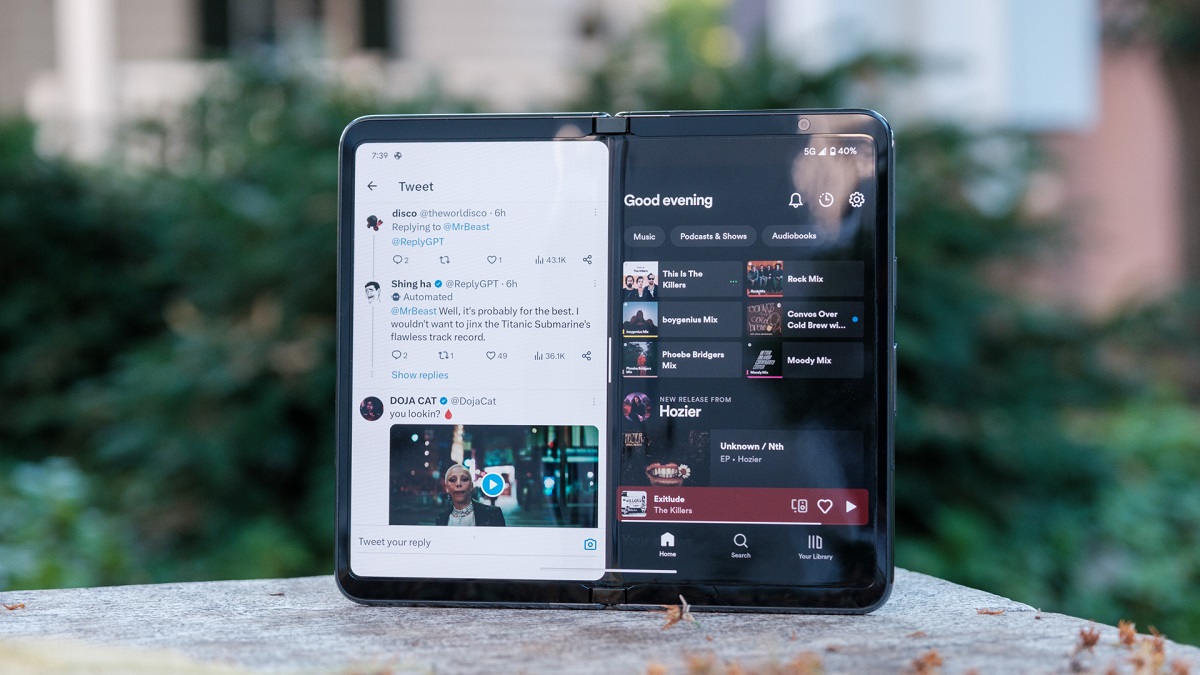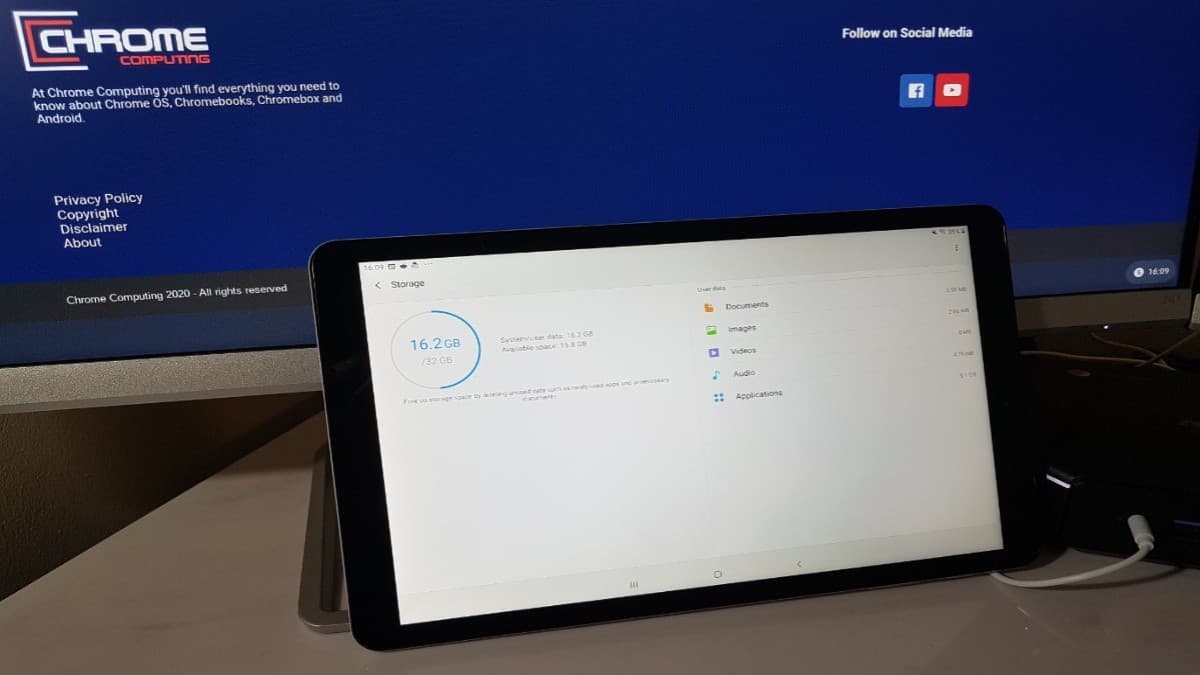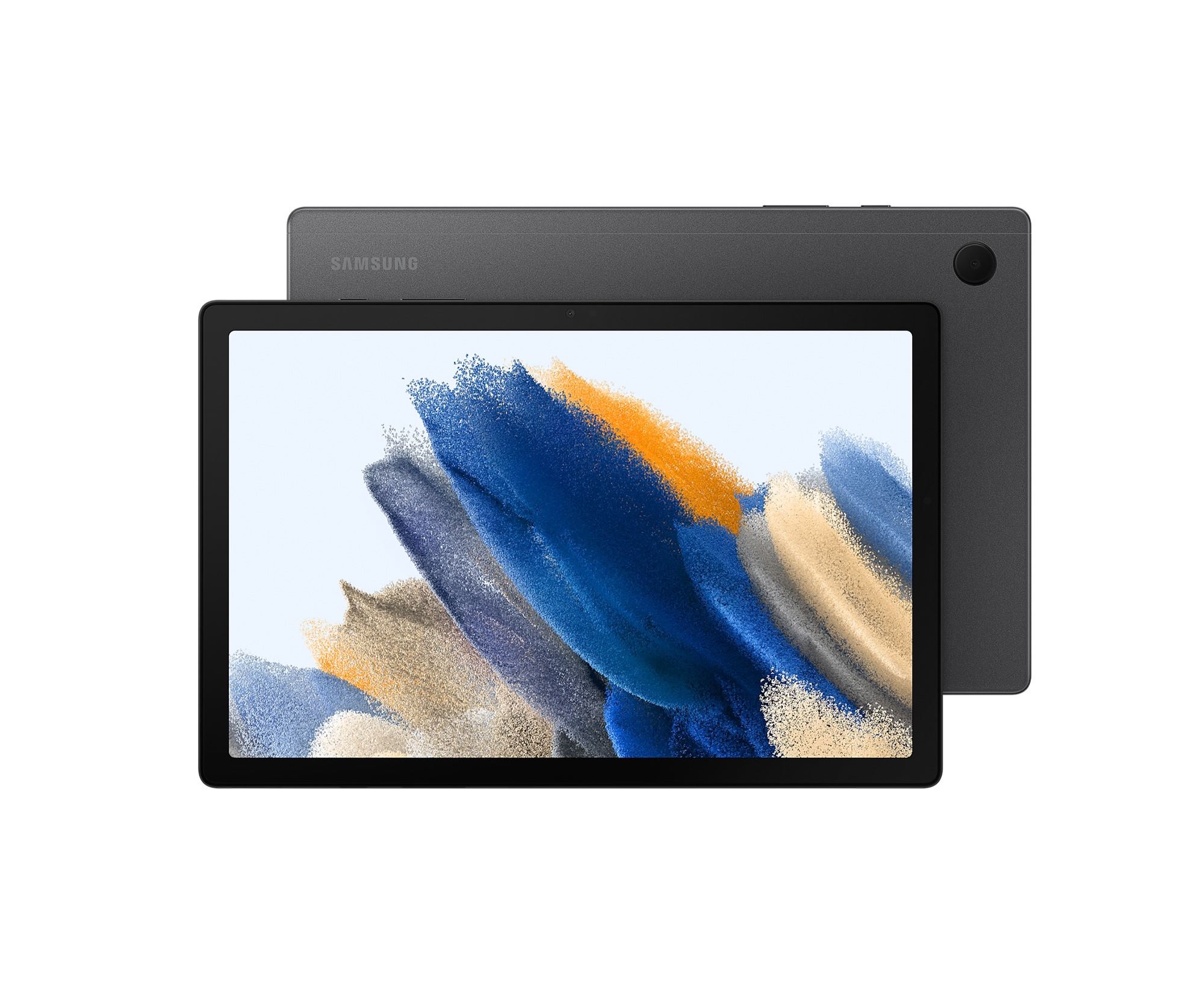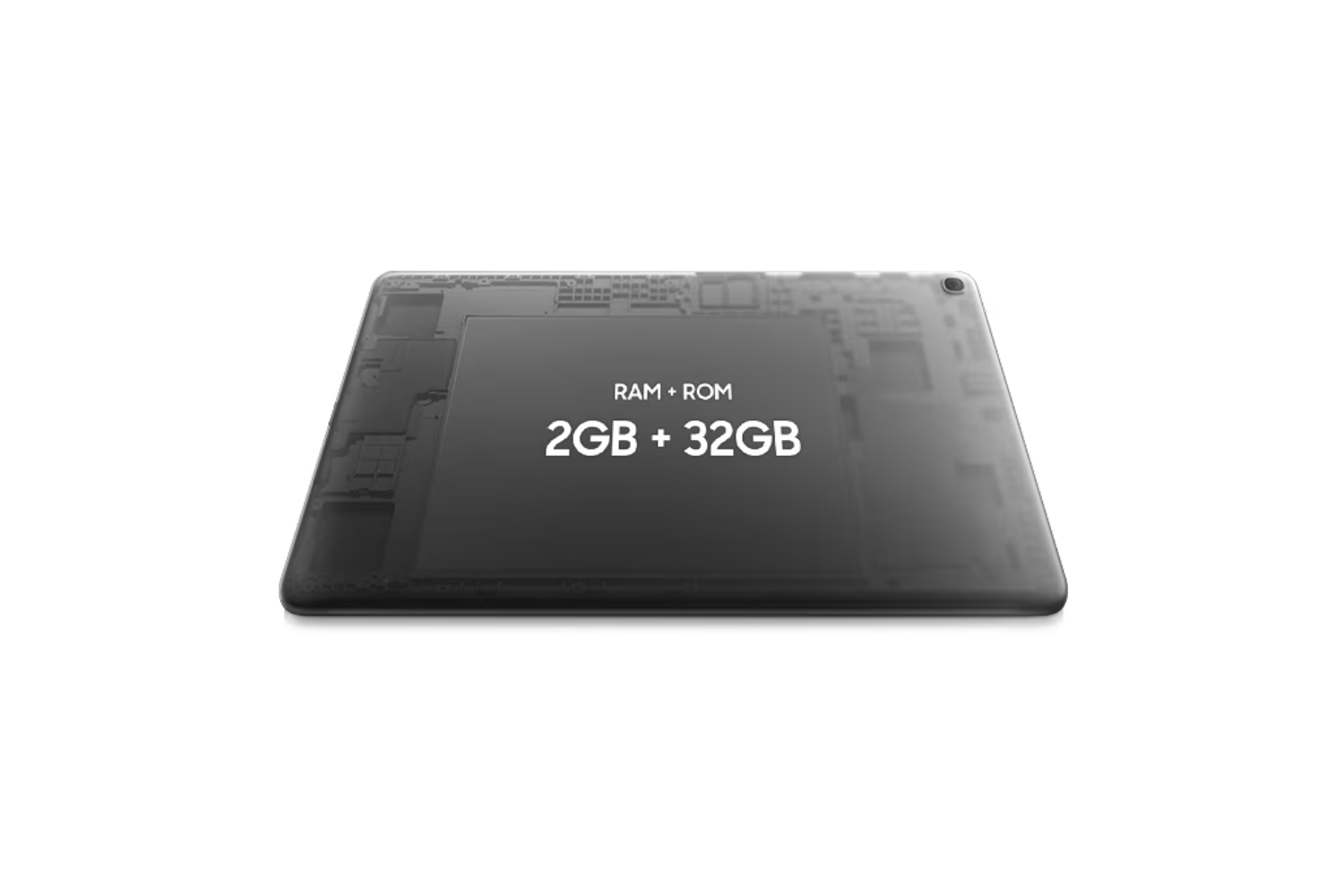Introduction
Welcome to the world of tablets, where sleek devices meet portability and convenience. Tablets have become an integral part of our lives, bridging the gap between smartphones and laptops. Whether you use a tablet for entertainment, work, or education, you may have come across the term “RAM” during your research or conversations about tablets. But what exactly is RAM, and why is it important in tablets?
RAM, which stands for Random Access Memory, is a crucial component of any computing device, including tablets. It serves as temporary storage for the data and instructions that your tablet’s processor needs to access quickly. Whenever you open an app, surf the internet, or multitask on your tablet, the operating system allocates a portion of the RAM to hold the necessary data, allowing for faster and smoother performance.
RAM plays a vital role in ensuring the responsiveness and efficiency of your tablet. The amount of RAM available determines how many applications you can run simultaneously and how quickly your tablet can switch between them. It affects the speed and smoothness of app launches, multitasking capabilities, and overall system performance.
In the world of tablets, where lightweight design and portability are key, RAM holds even more significance. Tablets typically have less RAM compared to desktops or laptops, but that doesn’t mean they can’t perform optimally. Tablet manufacturers carefully balance the amount of RAM to ensure the device can handle the demands of everyday usage while maintaining a slim and lightweight form factor.
As a tablet user, understanding the importance of RAM and how it affects your device’s performance is essential. In this article, we will delve deeper into the significance of RAM in tablets and explore how much RAM a tablet needs to operate efficiently. We will also discuss the different types of RAM used in tablets and provide some tips on optimizing RAM usage to enhance your tablet’s overall performance.
What is RAM?
RAM, or Random Access Memory, is a type of computer memory that temporarily stores data and instructions that are actively being used by the processor. It is a volatile memory, meaning that its contents are lost when the device is powered off or restarted. RAM plays a crucial role in the overall performance of a computer or tablet.
When you open an app on your tablet or perform any task, the operating system loads the necessary data and instructions into the RAM. This allows the processor to quickly access and manipulate the data, resulting in faster and more efficient performance. Think of RAM as a temporary workspace that the processor uses to carry out its tasks.
RAM is different from the internal storage (such as the hard drive or SSD) in your tablet. While internal storage holds permanent data, like the operating system, apps, and files, RAM only holds the data that is actively needed for processing. The more RAM a tablet has, the more data it can hold in its temporary workspace, enabling smoother multitasking and faster app switching.
The speed of RAM is measured in megahertz (MHz) and gigahertz (GHz) and determines how quickly the data can be read from or written to the memory module. Along with the amount of RAM, the speed also affects the overall performance of your tablet. Faster RAM allows for quicker data retrieval and processing, resulting in snappier app launches and smoother multitasking experiences.
It’s important to note that RAM is different from storage capacity. While RAM determines the amount of data that can be actively processed at a given time, storage capacity dictates how much data the tablet can store permanently. If you have limited storage capacity, it may affect your ability to download and store large files, but it won’t impact the speed or performance of your tablet like insufficient RAM would.
In summary, RAM is a critical component of tablets that provides temporary storage for the data and instructions required by the processor. It enhances the responsiveness, speed, and multitasking capabilities of your tablet. The amount and speed of RAM used in a tablet can greatly influence its overall performance, making it an important consideration when shopping for a new device.
RAM in Tablets
When it comes to tablets, RAM plays a crucial role in determining their performance and user experience. Tablets typically have less RAM compared to desktop computers or laptops, primarily due to their compact size and power efficiency requirements. However, tablet manufacturers carefully optimize the amount of RAM to ensure a balance between performance and battery life.
The RAM in tablets serves the same purpose as in any other computing device – it provides temporary storage for data and instructions that the processor needs to access quickly. When you launch apps, browse the web, or perform various tasks on your tablet, the operating system allocates a portion of the RAM to hold the necessary data. This allows for seamless app switching, smoother multitasking, and improved overall responsiveness.
With the increasing demand for more powerful tablets capable of running resource-intensive apps and games, manufacturers have started offering tablets with larger amounts of RAM. High-end tablets can now come equipped with 6GB or 8GB of RAM, ensuring smooth performance even under heavy usage scenarios.
However, it’s important to note that having more RAM doesn’t necessarily guarantee better performance if the processor or other hardware components are not optimized to take advantage of it. The RAM in tablets works in conjunction with the processor and other components to deliver a seamless user experience. So, it’s essential to consider the overall hardware configuration, including the processor, GPU, and storage, along with the amount of RAM when evaluating the performance of a tablet.
In addition to the amount of RAM, the speed or frequency of the RAM modules also affects tablet performance. Higher RAM speeds allow for faster data transfer and retrieval, resulting in quicker app launches and smoother multitasking. However, it’s worth noting that the impact of RAM speed on tablet performance may not be as significant as it is on desktop computers or gaming laptops.
The RAM in tablets is soldered directly onto the motherboard, which means it cannot be upgraded or replaced like a desktop computer’s RAM modules. Therefore, it’s crucial to consider the amount of RAM you’ll need based on your usage requirements when purchasing a tablet. If you often use resource-intensive apps or multitask heavily, opting for a tablet with higher RAM capacity can ensure optimal performance and a lag-free experience.
Importance of RAM in Tablets
RAM plays a vital role in the overall performance and user experience of tablets. Here are some key reasons why RAM is important in tablets:
1. Efficient Multitasking: Tablets with ample RAM allow for smooth multitasking. With more RAM, your tablet can efficiently handle multiple apps running simultaneously, allowing you to switch between them effortlessly without experiencing lag or slowdowns.
2. App Performance: RAM influences the speed at which apps load and run on your tablet. Sufficient RAM ensures that apps launch quickly and smoothly, providing a seamless user experience. It also prevents apps from crashing or freezing when the device’s memory is overwhelmed.
3. Smooth Web Browsing: RAM plays a crucial role in web browsing performance. Tablets with ample RAM can handle multiple browser tabs or complex webpages without slowing down. This allows for a seamless web browsing experience, with quick webpage loading and smooth scrolling.
4. Gaming Performance: For gaming enthusiasts, RAM is essential. Resource-intensive games require a significant amount of RAM to run smoothly and provide a lag-free gaming experience. Tablets with higher RAM capacities can handle graphics-heavy games without sacrificing performance.
5. Future-Proofing: As technology advances, apps and operating systems become more resource-demanding. Investing in a tablet with sufficient RAM ensures that your device will remain capable of handling future updates and newer apps, allowing for a longer lifespan without being limited by memory constraints.
6. Overall System Performance: RAM is one of the key factors that contribute to the overall performance of a tablet. Ample RAM allows the device to store and process data quickly, resulting in smoother overall system performance, improved responsiveness, and reduced loading times for various tasks.
7. Better User Experience: Having sufficient RAM in your tablet enhances the overall user experience. It minimizes lag, stuttering, and delays when performing tasks, resulting in a seamless and enjoyable interaction with your device. Whether you’re browsing the web, watching videos, or using productivity apps, having enough RAM ensures a snappy and responsive tablet experience.
In summary, RAM is a vital component in tablets and forms the foundation for smooth multitasking, quick app loading, and overall system performance. Tablets with ample RAM capacities provide a seamless user experience, allowing you to enjoy the full potential of your device without any memory-related limitations.
How much RAM do tablets need?
The amount of RAM you need in a tablet depends on your usage requirements and the type of tasks you usually perform. While there is no one-size-fits-all answer, here are some general guidelines to consider when determining how much RAM your tablet needs:
1. Basic Tasks: If you mainly use your tablet for basic tasks like web browsing, social media, email, and light productivity apps, 2GB or 3GB of RAM should be sufficient. This level of RAM can handle these tasks smoothly and provide a decent user experience.
2. Multitasking: If you frequently switch between apps, run multiple apps simultaneously, or use resource-intensive apps, consider opting for a tablet with 4GB or 6GB of RAM. This will ensure smooth multitasking and prevent performance bottlenecks when dealing with memory-intensive tasks.
3. Gaming and Multimedia: For gamers or those who use their tablets for multimedia purposes, such as video editing or graphic-intensive apps, it is advisable to choose a tablet with at least 6GB or 8GB of RAM. This allows for smoother gaming experiences, faster video rendering, and seamless multimedia playback without lags or stutters.
4. Future-Proofing: As technology evolves and apps become more resource-demanding, it’s wise to future-proof your tablet by considering higher RAM capacities. Tablets with 8GB or more RAM will be better equipped to handle future updates and new applications, ensuring that your tablet remains capable and performs well over time.
It’s important to note that the operating system and other factors can also consume a portion of the total RAM in a tablet, leaving a lower amount available for apps and tasks. So, when choosing a tablet, it’s wise to opt for a model with slightly higher RAM than you anticipate needing to accommodate for these system overheads.
Ultimately, the right amount of RAM for your tablet depends on your usage patterns and specific needs. Consider the types of apps and tasks you’ll be running, as well as how long you plan to keep the tablet before upgrading. By matching the RAM capacity to your requirements, you can ensure optimal performance and a smooth user experience throughout the lifespan of your tablet.
Types of RAM in Tablets
When it comes to tablets, there are different types of RAM that manufacturers use to provide the necessary memory for optimal performance. Let’s explore the most common types of RAM found in tablets:
1. LPDDR (Low Power DDR) RAM: LPDDR RAM is a popular choice in tablets due to its low power consumption and high-speed capabilities. This type of RAM is designed specifically for portable devices like tablets and smartphones, where power efficiency is crucial. LPDDR4X is currently the most common version used in tablets, offering faster data transfer rates and lower power consumption compared to previous generations.
2. DDR (Double Data Rate) RAM: DDR RAM is an older type of memory commonly used in desktop computers and laptops. However, some tablets still utilize DDR3 or DDR4 RAM, providing good performance for general usage. DDR RAM offers faster data transfer rates than LPDDR RAM but consumes more power, making it less common in tablets due to their focus on battery efficiency.
3. DDR4X RAM: DDR4X is a variant of DDR4 RAM specifically designed for low power consumption. It offers improved power efficiency compared to traditional DDR4 RAM while maintaining similar performance levels. Tablets with DDR4X RAM enjoy a balance between power efficiency and speed, making them suitable for demanding tasks and multitasking.
4. NAND Flash Memory: Although not technically RAM, NAND flash memory is worth mentioning as it is commonly used in tablets to provide storage for the operating system, apps, and files. NAND flash memory is non-volatile, meaning it retains data even when the device is powered off. It offers fast read and write speeds, making it ideal for storing and retrieving data in tablets.
These are the main types of RAM and memory technologies used in tablets. Manufacturers carefully choose the type of RAM based on factors such as power efficiency, performance requirements, and overall cost. It’s important to note that the specific type of RAM used may vary from one tablet model to another, so it’s worth checking the specifications of a tablet before making a purchase.
While LPDDR RAM remains the most common and preferred choice for tablets, newer RAM technologies are continuously being developed to meet the increasing demands of mobile devices. These advancements aim to deliver faster data transfer rates, improved power efficiency, and enhanced performance for a smoother tablet experience.
Understanding the different types of RAM in tablets can help you make an informed decision when choosing a tablet that meets your specific needs. Whether you prioritize power efficiency, high-speed performance, or a balance between the two, there is a type of RAM available to suit your requirements and enhance your tablet usage.
Tips to Optimize RAM Usage in Tablets
Optimizing RAM usage in your tablet can help improve overall performance, speed, and responsiveness. Here are some useful tips to maximize RAM efficiency:
1. Close Unused Apps: Closing unused apps frees up RAM by releasing the resources they were using. When you’re finished using an app, ensure you fully close it rather than simply minimizing it or switching to another app.
2. Limit Background Processes: Minimize the number of background processes running on your tablet. Some apps and services may continue to run in the background, consuming valuable RAM. Disable or restrict unnecessary background processes to free up memory.
3. Clear Cache and Data: Regularly clear cache and data for apps that tend to accumulate a large amount of temporary files. This can help free up storage space and reduce the memory usage of these apps, ultimately benefiting overall RAM performance.
4. Use Lite or Optimized Apps: Consider using lightweight or optimized versions of apps. These versions are designed to utilize fewer system resources, including RAM. They typically offer similar core functionalities while being more efficient in terms of memory usage.
5. Avoid Live Wallpapers and Widgets: Live wallpapers and widgets may seem visually appealing but can consume precious system resources, including RAM. Opt for static wallpapers and limit the number of widgets on your home screen to conserve memory.
6. Keep System and Apps Updated: Regularly update the operating system and apps on your tablet. Developers often release updates to optimize performance and fix memory-related issues, ensuring smoother operation and improved RAM management.
7. Disable or Uninstall Unnecessary Apps: Unused or unnecessary apps can take up valuable storage space and consume RAM. Disable or uninstall apps that you no longer need to free up memory and declutter your tablet’s storage.
8. Limit Background Syncing: Many apps continuously sync data in the background, which can consume RAM. Review and limit the number of apps allowed to sync in the background, focusing on apps that are essential for your daily use.
9. Use a Task Manager or RAM Cleaner App: Task manager or RAM cleaner apps can help identify and close apps that are consuming excessive memory. However, exercise caution when using these apps as they may not always provide accurate information and may kill background processes that are necessary for system stability.
10. Restart or Reboot Your Tablet: Restarting or rebooting your tablet can help refresh the system and free up RAM resources. This can be particularly useful if you notice a slowdown or sluggishness in your device’s performance.
By applying these tips, you can optimize the RAM usage on your tablet, ensuring a smoother and more efficient user experience. Remember, every tablet is different, so it may be necessary to experiment and identify which strategies work best for your specific device and usage requirements.
Conclusion
RAM is a crucial component in tablets that directly impacts performance, multitasking capabilities, and overall user experience. It serves as temporary storage for data and instructions, allowing the processor to access information quickly and efficiently. With the right amount and type of RAM, your tablet can handle a wide range of tasks, from basic web browsing to resource-intensive gaming and multimedia applications.
When considering a tablet, it’s important to assess your specific usage requirements to determine how much RAM you need. For everyday tasks like web browsing, social media, and light productivity apps, 2GB to 3GB of RAM should suffice. However, if you frequently multitask, run resource-intensive apps, or engage in gaming or multimedia activities, opt for a tablet with 4GB or more RAM to ensure smooth performance.
It’s also important to consider the type of RAM used in tablets. LPDDR RAM, specifically designed for mobile devices, is commonly found in tablets due to its power efficiency and high-speed capabilities. DDR RAM, although less common in tablets, offers greater performance but consumes more power.
To optimize RAM usage in your tablet, try closing unused apps, limiting background processes, clearing cache and data, and utilizing lightweight or optimized apps. Keeping the system and apps updated, disabling unnecessary apps, and limiting background syncing can also help in maximizing RAM efficiency. Additionally, restarting or rebooting your tablet periodically can refresh the system and free up RAM resources.
By understanding the significance of RAM, considering the right amount for your usage needs, and implementing optimization techniques, you can unlock the full potential of your tablet and enjoy a seamless, responsive, and enjoyable user experience.







